A Halloween Sermon by Simon
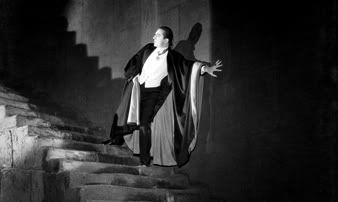
Don't get me wrong — nowadays the jack-o-lantern celebration is more seamlessly exploited than ever, making tons of money as children shell out for Harry Potter costumes and adults shell out for Britney Spears costumes and everyone buys those bags of "fun-size" chocolate bars that weigh as much as a sack of topsoil. There are Halloween fairs and Halloween stores and sexy Halloween parties for the grown-ups and Halloween promotions and Halloween movie marathons on AMC.
Then, at the stroke of midnight, it's full tilt toward Thanksgiving.
Wearing costumes, being spooky, eating so much candy that your molars sing like Zatoichi's sword ... America loves it all.
And I'd be the last person to bemoan the "commercialization" of the holiday. But when I was a kid it had a certain, well, religious intensity.
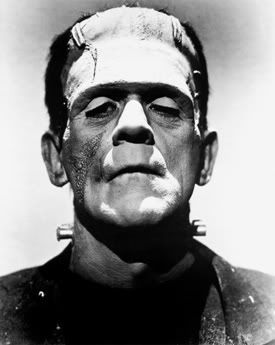 Y'see, I was one of those kids who dreamed about Halloween all year long. This was in part because I was the weird kid who spawned the weird adult I'm proud to be today. But I believe it's also because I grew up in the Second Golden Age of Monsters.
Y'see, I was one of those kids who dreamed about Halloween all year long. This was in part because I was the weird kid who spawned the weird adult I'm proud to be today. But I believe it's also because I grew up in the Second Golden Age of Monsters.The greatest monster movies of all time were made in the '30s and '40s. I'm talking about the Universal classics, natch: Frankenstein and at least a few of its sequels, Dracula, The Mummy, The Wolf Man, The Invisible Man and assorted lesser-known treasures.
Why have monster films been so underwhelming of late, despite massive effects budgets and the doting attention of "serious" filmmakers? Because the desire to either shock with gore or tickle with kitsch (I'm looking at you, Stephen Sommers) has overshadowed what made the Uni monsters great: feeling.
The Frankenstein Monster, Dracula and the Wolf Man are tragic, dude. They're outcasts, exiles, prisoners of cruel fate. They feel longing and love, regret and even ennui. And yes, rage — but that wild destructive power has a context. Feel me? Lycanthrope Larry Talbot desperately seeks a cure for his nightmare condition. The Monster wants a friend. Dracula feels the dread weight of immortality crushing what little joy he can still feel. The Mummy wanders forever in search of his lost love. And the Hunchback? Don't even get me started.
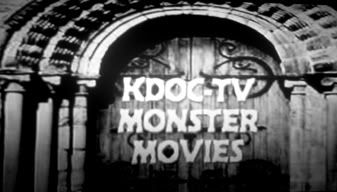
These flicks were hits when they came out, but when they were re-released in theaters and shown on TV in the '50s and '60s, they were welcomed into the cultural mainstream. They became domesticated into comedy, into music, into pop art; they were part of the family.
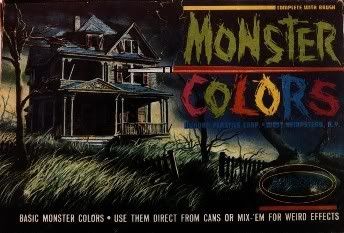
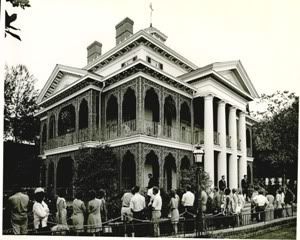
All of which is to say that for me Halloween was a time for the exaltation of all things creepy. I set up elaborate "haunted houses" to frighten the local kids, with demon claws descending on fishing line and mangled corpses fashioned out of old clothes. I had extensive collections of plastic fangs, tubes of "Vampire Blood," top hats and cloaks, which I donned to distribute mini-Snickers as ominously as possible to the courageous Spidermen and ballerinas who dared to ring the family doorbell.
Long after the Halloween decorations were gone from the neighborhood houses and local drugstores, my surroundings remained monster-friendly. An array of posters and photos from classic fright films adorns my office even now. Today might be the day I share my monsters with everyone, but where I live — by which I mean in the cobwebby corridors of my eternally eight-year-old imagination — it's always Halloween.

7 comments:
I understand exactly what you mean!
I remember sitting on the couch late at night with my dad, eating pop-corn and giggling at the wiggly scariness of the TINGLER!!
From the that moment on October 1st, when I hung the bloody writhing bags of yuk on the porch and sprinkled the sticky sweet blood all over the pathway and the Jack-O-Lanterns, I looked forward with glee to testing the bravery of the princesses and the zombies in my neighborhood.
I love being "that lady" on the block.
& OH my.
Zatoichi, Bill Castle, and little tiny Snickers, all in one post.
If I didn't know that you were already happily hitched to a goddess, I would totally ask you to marry me.
..hmm...
wow, that probably wasn't the best choice of second posts, huh?
I'm a huge fan of Lon Chaney and each of his characters (even the most evil) were tragic. It takes a truly gifted actor to make you "like" the villain despite your best judgement.
I love special effects but I'm a firm believer that you don't need them to scare people. It's all about acting and ambiance. oh and a good script doesn't hurt ;)
Suina: I'm deeply flattered. Great minds and all that. We have a killer German poster for "The Tingler" that says "Shrei wenn der Tingler kommt!"
And Kadyn: You said a mouthful (of scary and painful prosthetic teeth) about Lon Chaney. There's a case to be made that he was the greatest actor of the silent era. If only a print of "London After Midnight" would surface -- you can tell from the stills it was a juicy performance.
Simon
I saw a few images of that film on the TCM DVD dedicated to Lon Chaney and I'd love to watch it one day. But I'm optimistic, they found reels of a very old lost french movie in an attic lats year. So, maybe someone will find a copy one of these days.
Hey, Ms Gamble, this is a random question that has nothing to do with this blog, really, but I don't actually know where else to send it. It's not a very important question, it's just, it's one of those questions that not knowing the answer to bugs the hell out of you. So.
I was recently at a fan convention in LA and won one of two scripts that you had signed for us. The one I got was 'Heart'. I actually had a question about it, but it's not anything show wise.
Just. What do those *'s on the right side of the page mean? Sometimes there are tons of them and sometimes there are none and they aren't just on the recently edited pages so it's confusing me. If you could let me know, or at least point me in the right direction of the answer? I'd love it.
Thank you!
-kwen
Asterixes appear next to lines that have changed since the last draft. Also, the subsequent new pages are issued in different colors so we can keep track. That's why the script is all rainbowy.
Great blog. I still get excited when I see that Universal logo from the 30s and 40s before a film on TV.
Post a Comment